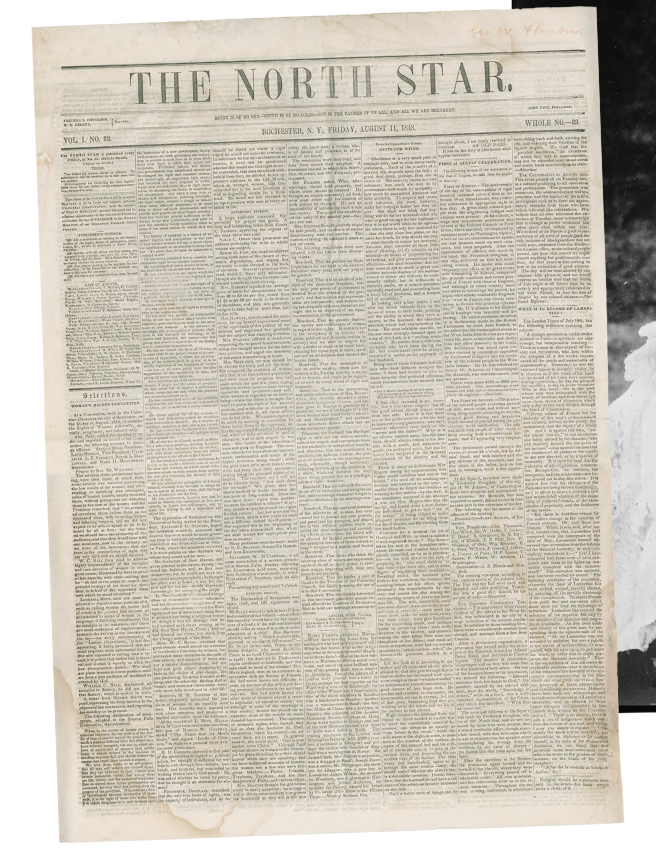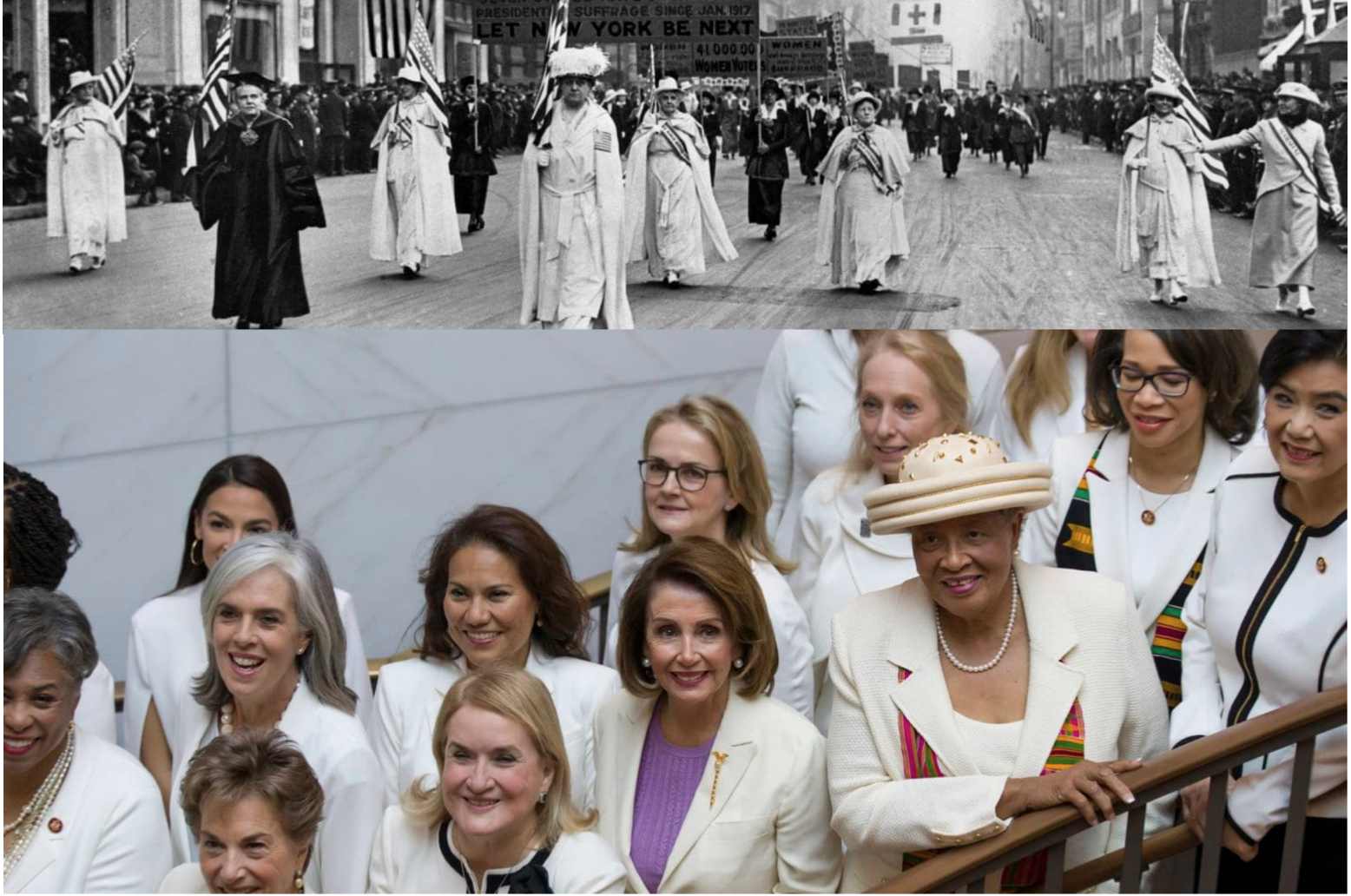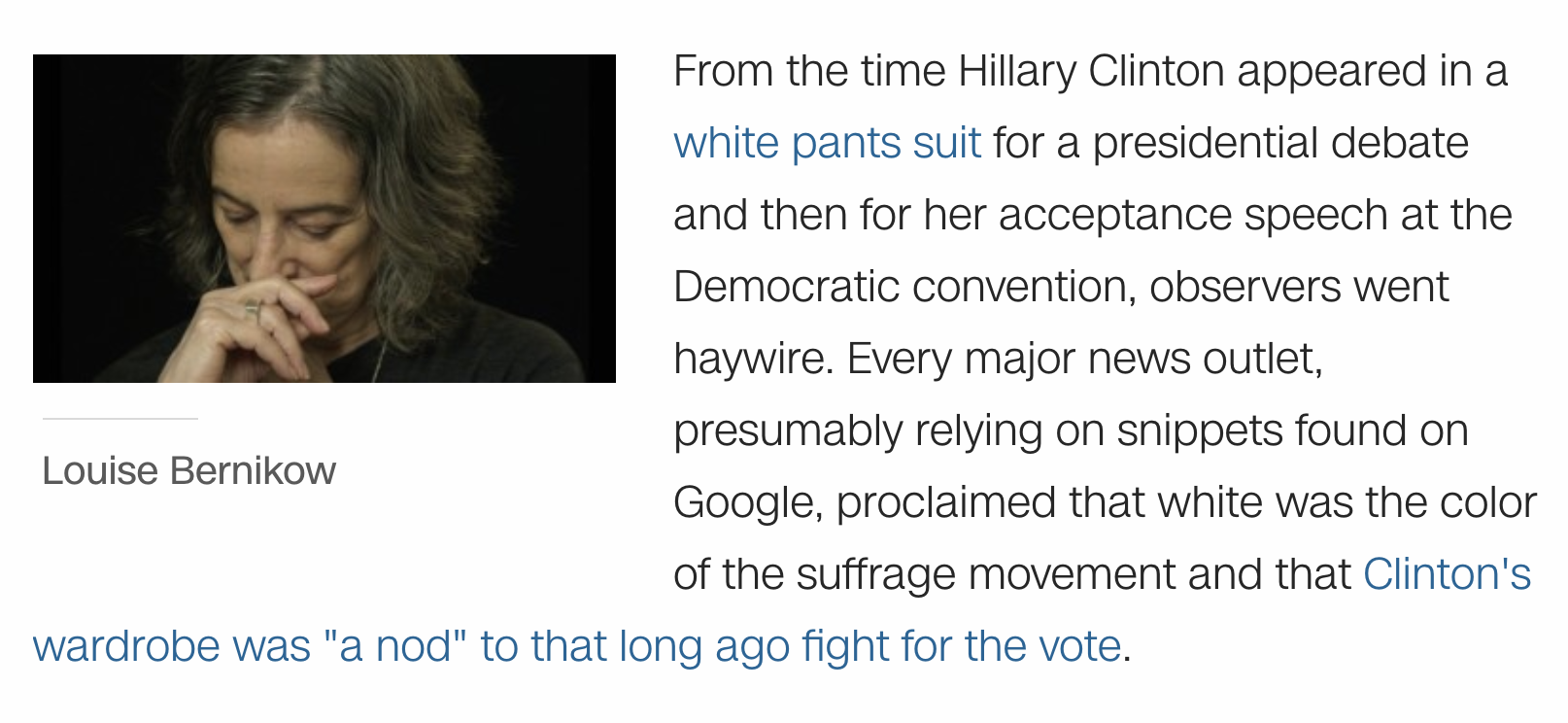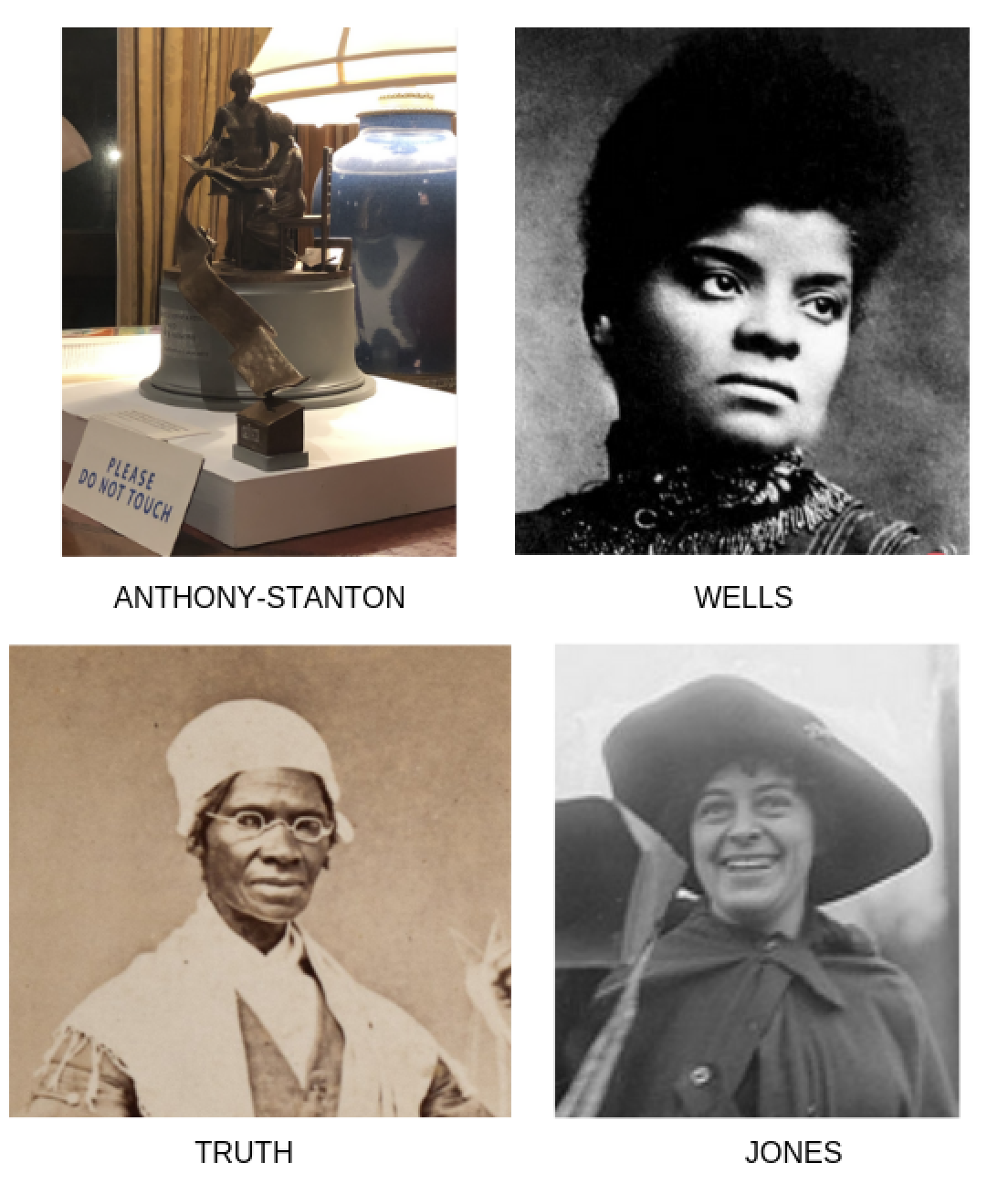NEW RESEARCH, INTERVIEW, PODCAST: Nancy C. Unger, “Legacies of Belle La Follette’s Big Tent Campaign for Women’s Suffrage”
Nancy C. Unger analyzes of the “big tent” yet “Janus-faced” suffrage arguments promoted by Bella La Follette in the pages of La Follette’s Magazine, demonstrates how, over two decades at the start of the twentieth century, La Follette deftly melded social justice and expediency arguments with the aim of attracting as diverse an array of suffrage supporters as possible. This included La Follette’s willingness to chide middle class white suffragists for their overt racism. While Unger concludes that the wide-ranging arguments of La Follette and others helped bring the Nineteenth Amendment to fruition, “they also reinforced lasting cultural, political, economic, ideological, and social differences between the sexes and among women. Listen to this podcast from the Journalism History site of Dr. Unger talking about her article, links to which are below. Taylor & Francis has opened access for the period April 15 to July 15, 2019.
(This page will take you to all the synopses of articles in American Journalism’s special issue, “Women’s Suffrage and the Media.”)
Here below, Dr. Unger responds to the questions: What prompted you to choose this topic and what surprised or fascinated you as you conducted your research?
“As a scholar of the long Gilded Age and Progressive Era, I have long been fascinated by the progressive reform tradition coming out of the Midwest. After writing Fighting Bob La Follette: The Righteous Reformer (University of North Carolina Press, 2000; Wisconsin Historical Society Press, 2008), I turned my attention to Bob La Follette’s wife, Belle Case La Follette (1859-1931). Belle La Follette: Progressive Era Reformer (Routledge 2016) was the result. I admire this married couple’s lifelong dedication to reform. She, for example, was not only a journalist, outspoken proponent of civil rights, and ardent advocate of world peace and disarmament, but also a leader in the women’s suffrage movement. However, some of her activism, especially her “big tent” approach to the latter, gave me pause.
“Belle La Follette used mutually exclusive arguments to promote women’s suffrage. Even as she made feminist appeals for suffrage, advocating equality of the sexes, she also used traditional gendered arguments, presenting women as qualified to vote by virtue of their domestic natures. By combining these approaches she (and others like her) certainly brought a wide-ranging set of supporters to the cause—but at what price?”
“It is discouraging to me that even today, some of the old arguments espoused by La Follette, that women are naturally more domestic and altruistic than men, still contribute to society’s disparate treatment of the sexes. So I think it’s important for groups seeking reforms or a particular candidate’s election to ponder such questions as: Do the ends justify the means? Do the reasons matter why a reform or candidate gain support, or should gaining support be the sole consideration? What unintended consequences can result from promoting a contradictory campaign, especially a winning one? What’s the risk of not promoting an argument that could enhance the chance for victory?
Despite my criticisms of some of La Follette’s tactics, in the process of research this article, I was impressed all over again by the breadth and depth of her dedication to reform based in democratic principles. Even as she was fighting for women’s suffrage, I was particularly struck by this white woman’s equally intense efforts to combat efforts by the Woodrow Wilson administration to racially segregate Washington, DC. The African-American community responded with enthusiasm and gratitude. African-American activist Nannie Helen Burroughs hailed La Follette as “the successor of Harriet Beecher Stowe,” and lawyer James Hayes told La Follette, “We thank God for such a white woman as you. We thank God for sending you to us and we thank you for coming. A few more like you would awaken the sleeping conscience of the nation.” Despite my concerns about some of her tactics, I find her an inspiring example of a person truly dedicated to uplifting all Americans.”

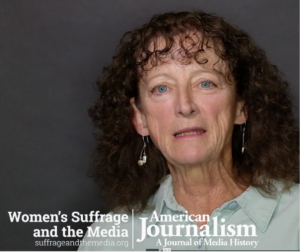 Dr. Lumsden introduces our special issue with her prodigious historiography of suffrage and the media research across the past half-century. Decade by decade, she traces the scholarly research trends—and gaps—from the recovery efforts in the 1970s, through the cultural-historical and media coverage analyses in the 1980s, to intersectional approaches of black feminist scholars in the 1990s that challenged earlier accounts. As the century turned, scholars considered suffragists’ contributions to consumer culture and cast a critical eye on the visual rhetoric of spectacle in the form of parades and the White House pickets. By 2017, as the national centennial celebration commenced, three new books reflected on “the golden media effect” of elites with style, money and celebrity-like appeal who became engaged with the movement in its final decade. Much suffrage media research has been piecemeal, Lumsden argues. She calls for fresh comprehensive examinations of how U.S. suffrage print culture drew women into the public sphere and changed them both.
Dr. Lumsden introduces our special issue with her prodigious historiography of suffrage and the media research across the past half-century. Decade by decade, she traces the scholarly research trends—and gaps—from the recovery efforts in the 1970s, through the cultural-historical and media coverage analyses in the 1980s, to intersectional approaches of black feminist scholars in the 1990s that challenged earlier accounts. As the century turned, scholars considered suffragists’ contributions to consumer culture and cast a critical eye on the visual rhetoric of spectacle in the form of parades and the White House pickets. By 2017, as the national centennial celebration commenced, three new books reflected on “the golden media effect” of elites with style, money and celebrity-like appeal who became engaged with the movement in its final decade. Much suffrage media research has been piecemeal, Lumsden argues. She calls for fresh comprehensive examinations of how U.S. suffrage print culture drew women into the public sphere and changed them both. 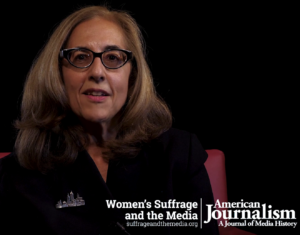 Developing racialist themes more broadly, Dr. Grasso takes on the “differently radical” approaches to the suffrage question of the NAACP’s the Crisis, under the leadership of W.E.B. Du Bois, and of the Masses under editor Max Eastman. She underscores the “radicalized racialism” of the 1910s as manifested in these two magazines, one with a black readership, the other with a white one. They were as united in their support for women’s suffrage as they were divided by their distinct political imperatives. Grasso’s close look at the 1915 suffrage issues of both magazines illustrates their divergent perspectives on gender discrimination and disenfranchisement. “When examining suffrage media rhetoric,” Grasso writes, what’s important is to consider “race in gendered radicalism and gender in race radicalism.”
Developing racialist themes more broadly, Dr. Grasso takes on the “differently radical” approaches to the suffrage question of the NAACP’s the Crisis, under the leadership of W.E.B. Du Bois, and of the Masses under editor Max Eastman. She underscores the “radicalized racialism” of the 1910s as manifested in these two magazines, one with a black readership, the other with a white one. They were as united in their support for women’s suffrage as they were divided by their distinct political imperatives. Grasso’s close look at the 1915 suffrage issues of both magazines illustrates their divergent perspectives on gender discrimination and disenfranchisement. “When examining suffrage media rhetoric,” Grasso writes, what’s important is to consider “race in gendered radicalism and gender in race radicalism.” 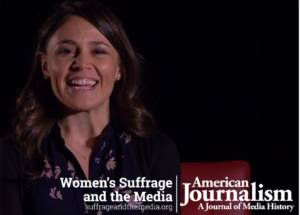 Dr. Lewis acknowledges that the welcome avalanche of mainstream press coverage of New York’s suffrage hikers indeed subverted aspects of the suffragists’ purpose. For as the women walked the 170 miles from New York City to Albany in December 1912, the press often mocked and made light of their trek. She further contends that by portraying their pilgrimage as a journey of “adventurous, determined, and emotional heroines of an action-packed serial,” the press managed to publicize, represent and domesticate the meaning of the women’s public mobility in a way that made their activism seem less alarming and more intriguing.
Dr. Lewis acknowledges that the welcome avalanche of mainstream press coverage of New York’s suffrage hikers indeed subverted aspects of the suffragists’ purpose. For as the women walked the 170 miles from New York City to Albany in December 1912, the press often mocked and made light of their trek. She further contends that by portraying their pilgrimage as a journey of “adventurous, determined, and emotional heroines of an action-packed serial,” the press managed to publicize, represent and domesticate the meaning of the women’s public mobility in a way that made their activism seem less alarming and more intriguing.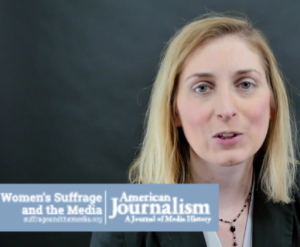 Finally, no new research on suffrage and the media would be complete without attention to the anti-suffragists, which Dr. Finneman provides with her work on local press coverage of the antis in the critical year of 1917, when their efforts neared defeat. Through the use of textual analysis and framing, and social movement theory, Finneman’s essay enhances the literature on press portrayals of counter-movements.
Finally, no new research on suffrage and the media would be complete without attention to the anti-suffragists, which Dr. Finneman provides with her work on local press coverage of the antis in the critical year of 1917, when their efforts neared defeat. Through the use of textual analysis and framing, and social movement theory, Finneman’s essay enhances the literature on press portrayals of counter-movements.  Dr. Easton-Flake begins to answer Lumsden’s call. She analyzes—in tandem for the first time—the literary works that appeared in the Revolution, the organ of the National Woman Suffrage Association, and the Women’s Journal, published by the American Woman Suffrage Association. Easton-Flake finds that the fiction and poems were an integral part of each journal’s polemics as the fiction and poems they published articulated and advocated their organization’s respective views of the new woman and the changes most needed for her advancement.
Dr. Easton-Flake begins to answer Lumsden’s call. She analyzes—in tandem for the first time—the literary works that appeared in the Revolution, the organ of the National Woman Suffrage Association, and the Women’s Journal, published by the American Woman Suffrage Association. Easton-Flake finds that the fiction and poems were an integral part of each journal’s polemics as the fiction and poems they published articulated and advocated their organization’s respective views of the new woman and the changes most needed for her advancement. 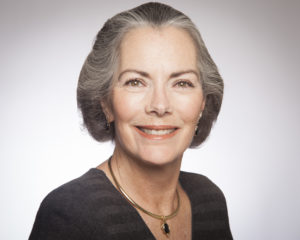 Dr. Unger’s analysis of the “big tent” yet “Janus-faced” suffrage arguments promoted by Bella La Follette in the pages of La Follette’s Magazine, demonstrates how, over two decades at the start of the twentieth century, La Follette deftly melded social justice and expediency arguments with the aim of attracting as diverse an array of suffrage supporters as possible. This included La Follette’s willingness to chide middle class white suffragists for their overt racism. While Unger concludes that the wide-ranging arguments of La Follette and others helped bring the Nineteenth Amendment to fruition, “they also reinforced lasting cultural, political, economic, ideological, and social differences between the sexes and among women.”
Dr. Unger’s analysis of the “big tent” yet “Janus-faced” suffrage arguments promoted by Bella La Follette in the pages of La Follette’s Magazine, demonstrates how, over two decades at the start of the twentieth century, La Follette deftly melded social justice and expediency arguments with the aim of attracting as diverse an array of suffrage supporters as possible. This included La Follette’s willingness to chide middle class white suffragists for their overt racism. While Unger concludes that the wide-ranging arguments of La Follette and others helped bring the Nineteenth Amendment to fruition, “they also reinforced lasting cultural, political, economic, ideological, and social differences between the sexes and among women.” 